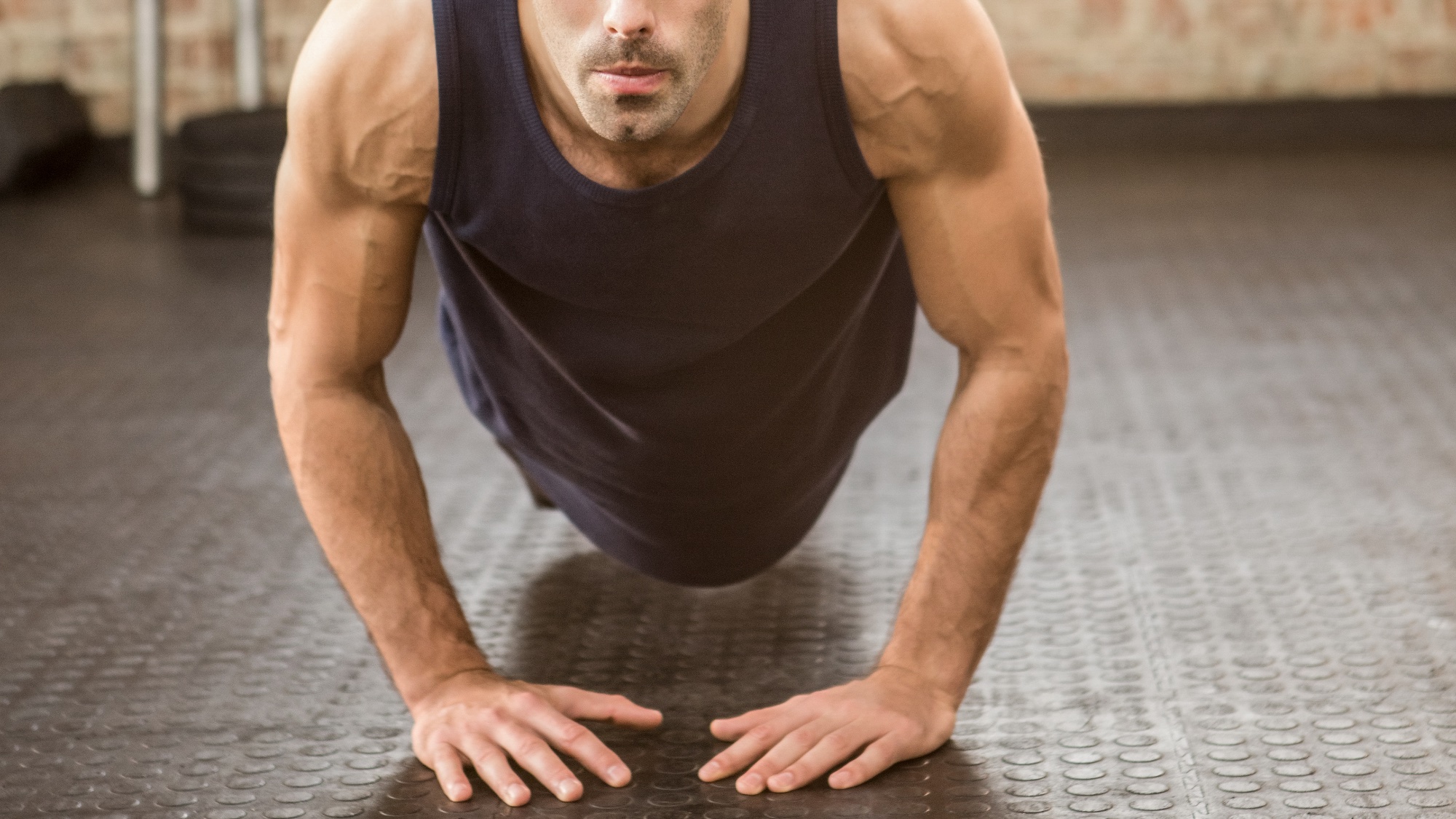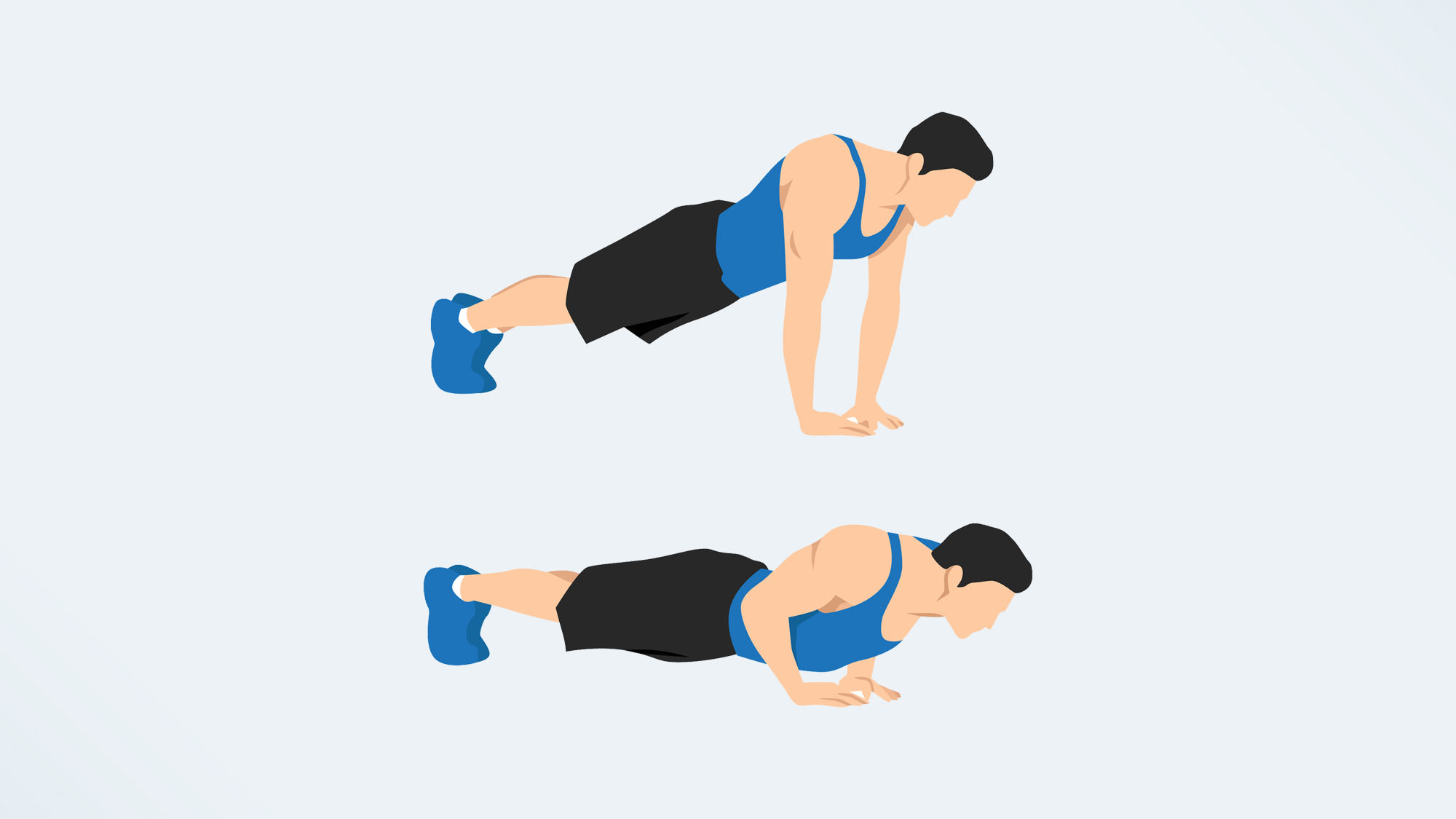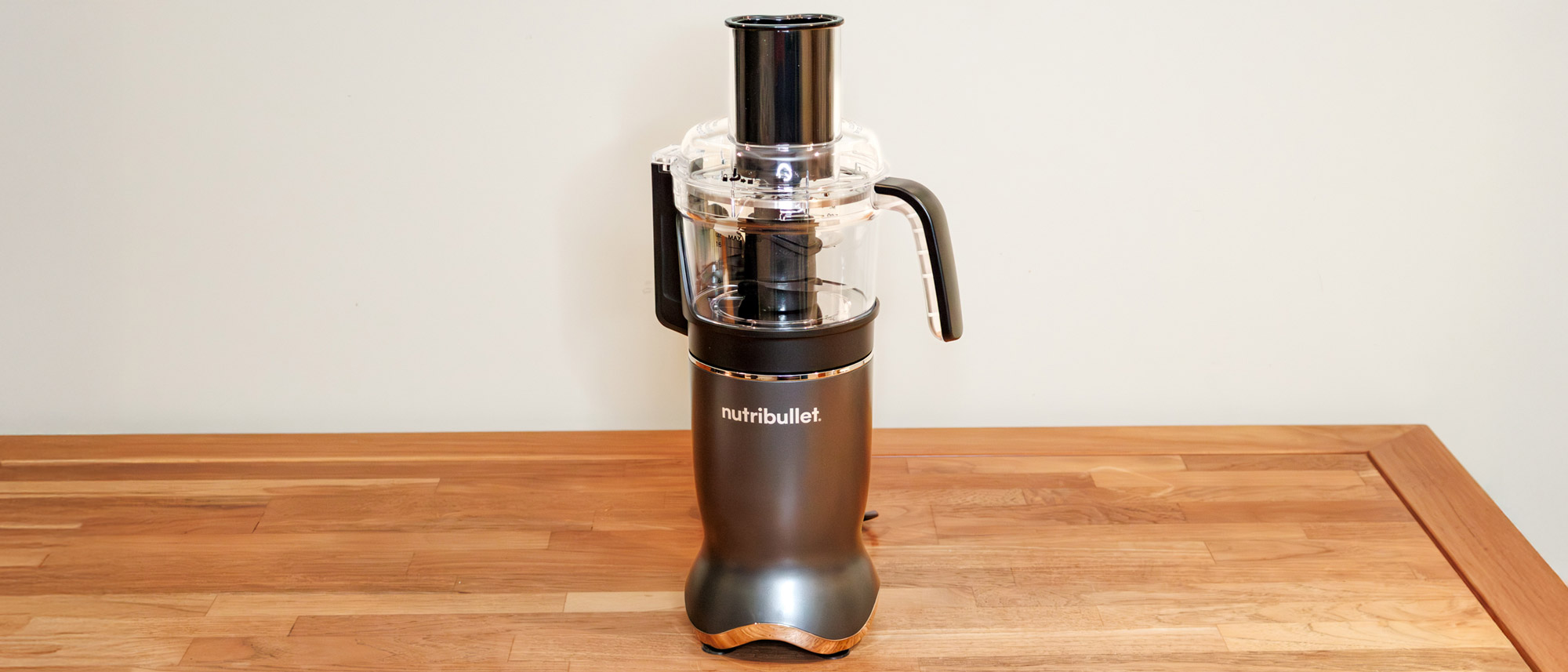I did diamond push-ups every day for a week — here’s what happened to my body
This is a popular variation on one of the most basic body-weight moves, but does it ring true?

As if regular push-ups weren’t hard enough to master (go to any gym and watch lots of people doing them incorrectly — arching back, flaring elbows, and so on), someone decided that the diamond push-up was a terrific idea: now here’s a variation that really targets your triceps.
The name comes from the shape you create on the floor with your thumbs and index fingers to perform the move. It’s also known as the triangle push-up (which is slightly confusing, unless you form a triangle shape with your hands) and the triceps push-up, which tells you all you need to know about the intent of the exercise — the positioning of the hands is designed to increase the load on those upper arm muscles.
In addition to the triceps, the diamond push-up (like all variations of the move) works the pectoralis major and minor (chest muscles), deltoids (shoulder muscles), and, to a lesser extent, the core. In short, it’s a terrific upper-body exercise. To be frank, it’s also the kind of move that looks impressive in a gym. It’s worth noting, too, that the ability to perform push-ups multiple times is a sign of good cardiovascular health, so don’t neglect this basic move.
How to do a diamond push-up

Let me start with this: Do not try the diamond push-up until you have mastered the basic move. This isn’t just running before you can walk — it’s attempting a triple axel before you’ve learned how to balance on your ice skates. It will end badly.
So, when you are ready, begin in a high plank position, forming a straight line from toes to head, arms directly under your shoulders. Unlike the traditional push-up, you place your hands close together. Now use your index fingers and thumbs to form the diamond shape on the mat (and I do recommend using a mat for this move). With your core and glutes engaged, slowly lower toward the floor, ensuring, as much as possible, that your elbows move along your ribcage rather than flaring out. Go as low as you can while maintaining form, then slowly straighten your arms to return to start position. That’s one rep. In the beginning, aim for three sets of 8-10.
Looking for more workout inspiration? Here are 5 push-up variations that'll challenge your chest strength, plus everything you need to know about how to do a push-up, and the variations to try.
I did diamond push-ups every day for a week, and this is what happened
I had an idea this one was going to be tough and I was right, which is not something that normally irks me. On day one, I aimed for three sets of 10 and I enjoyed not one of them. By the end, I was breathing hard and realized I hadn’t been thinking about good form — I just wanted to get through them. I also found it hard to get close to the floor, but what bothered me most about the move was the pressure it placed on the area of my palms below my little finger, close to the wrist. In a standard push-up, the pressure is dispersed evenly across the palms, but that wasn’t the case here — every rep was uncomfortable. This, of course, further distracted me from focusing on good form.
Get instant access to breaking news, the hottest reviews, great deals and helpful tips.
For the rest of the week, I used a mat. There was still some discomfort on day two, but I was able to concentrate on form — and it was not good. Not even a little bit. I wasn’t engaging my core, which meant I was sagging slightly in the midsection. I corrected that but what I found more difficult to address was the fact my elbows were pointing slightly out, rather than back toward my feet. This was a result of the beginning hand position; turning them toward each other to form the diamond or triangle naturally causes the elbows to slide out. I finished the sets but was still unconvinced by the necessity of the hand position. Another thing to watch: You may be tempted to drop your head to give the impression that you’re lowering closer to the floor. You are, of course, giving this impression only to yourself, which is a waste of time. Don’t move your head; focus instead on getting your chest as close to the floor as you can.
On days three and four, I was able to complete four sets of 10. Before I attempted the move, I warmed up my muscles with some dips and biceps curls, which helped. I felt I was getting better, and I was feeling the effort afterward in my triceps and across my shoulders. This is normally the stage when I begin to get some satisfaction from a challenge, but not this time.
In the final three days, I was able to keep my elbows closer to my body (though not as close as I’d have liked) and completed the sets with less difficulty than I’d felt at the beginning of the week.
The move does intensely target the triceps, but here’s the thing — so do other body-weight moves, such as the triceps dip (which you can do on a bench) and the close-grip push-up. The latter simply involves placing your hands closer than they are in a standard push-up, but — and this is crucial — you don’t turn them toward each other, which means your elbows naturally slide back and forth, not in and out, as you lower and raise. I added a set of close-ups on day six and found them far smoother and just as tightly focused on my triceps as the diamond variety.
Some people swear by this move, but I’m not convinced it’s necessary for those who want to work on their triceps. Other moves do a similar job and allow a more natural movement while matching the effort level. You may love it, and good luck to you if you do, but for me, the shine wore off pretty quickly.
There's nothing I love more than a fitness challenge! Read what happened when I did week-long challenges focusing on Russian twists, Supermans, and tricep extensions here.
John is a writer and editor based in London. He was worked for magazines such as Runner’s World, Men’s Health, Women’s Health and Cosmopolitan. A keen runner, what he lacks in ability he makes up for with enthusiasm and excuses.

